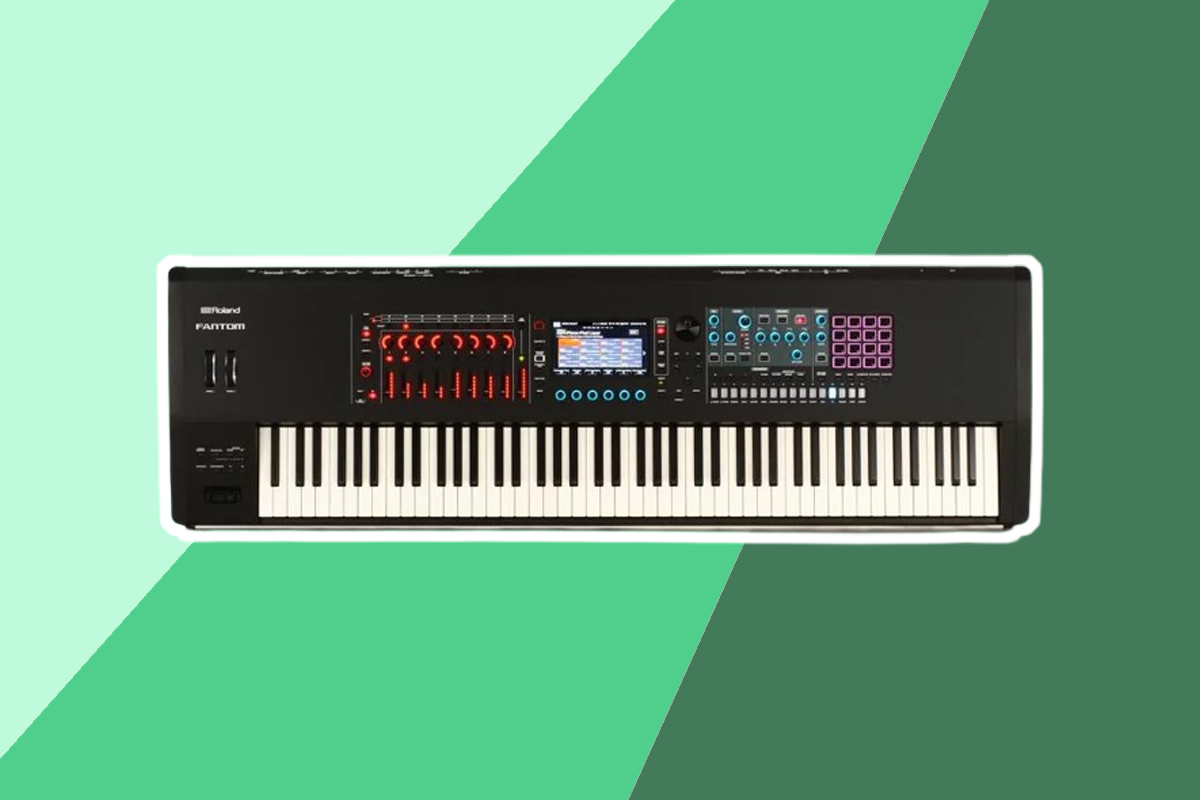
If you're looking for the best keyboard workstation for your musical needs, look no further than this list. We've gathered the top options on the market to help you find the perfect one for you. Whether you're a musician or producer, there's a keyboard workstation out there that's perfect for you.
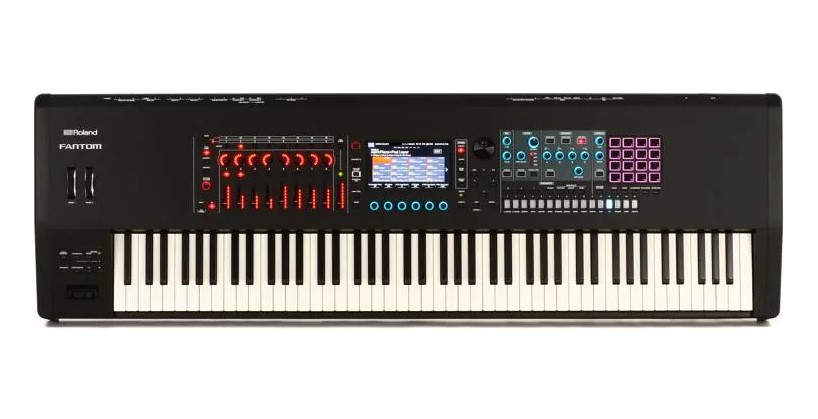

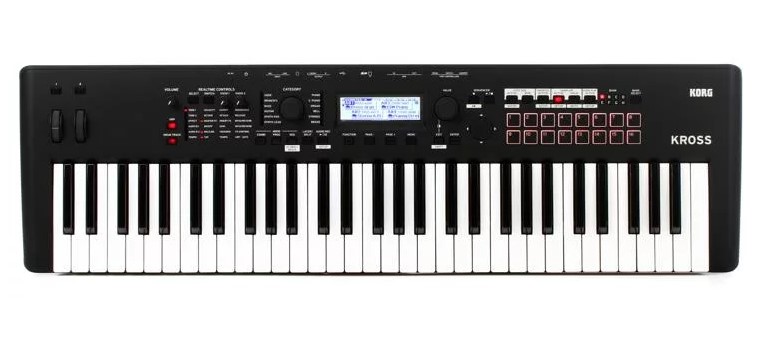

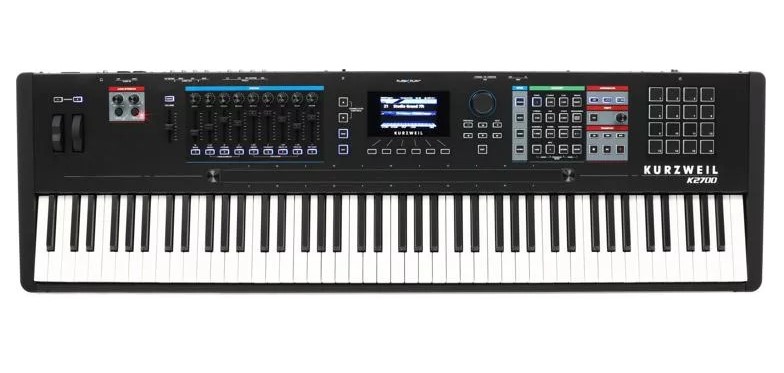

With so many options available, it can be tough to know where to start. That's why we've gathered the best of the best in one place. We've considered features like price, portability, and functionality to come up with a list of the best keyboard workstations on the market. No matter what your budget or requirements, you're sure to find the perfect option on this list.
| № | Name | Rating | |
|---|---|---|---|
| 1 | Roland FANTOM-8 |
9,8
|
Check price |
| 2 | Korg Kross 2-61-MB 61 |
9,7
|
Check price |
| 3 | Kurzweil K2700 88 |
9,6
|
Check price |
| 4 | Yamaha Montage 8 88-key |
9,5
|
Check price |
| 5 | Yamaha MOXF6 61-key |
9,4
|
Check price |
| 6 | Korg Nautilus 61 |
9,3
|
Check price |
| 7 | Roland JUNO-DS61 |
9,2
|
Check price |
| 8 | Yamaha PSRSX900 |
9,1
|
Check price |
| 9 | Casio WK-6600 |
9,0
|
Check price |

Roland’s FANTOM-8 is our Editor’s Choice because it is a keyboard workstation that is perfectly designed to facilitate and enhance the workflow of modern musicians. It features a fast and fluid workflow with no confusing modes or technical limitations that can derail your creative process. The expandable ZEN-Core sound engine delivers authentic acoustic and electronic instruments, while the V-Piano technology provides breathtaking realism and expression. The keyboard is also aftertouch-sensitive and has a progressive hammer-action keybed with escapement for a realistic playing experience. Polyphony is impressive with up to 256 notes on the ZEN-Core engine and unlimited on the V-Piano engine. If you’re looking for a keyboard workstation that will help you take your music to the next level, the Roland FANTOM-8 is a perfect choice.
Roland also has two more workstations in the series; FANTOM-7 and FANTOM-6. The FANTOM-7 has 76 keys while the FANTOM-6 has 61 keys. Both keyboards are lower in price, weight, and size. The channel aftertouch, effects, MIDI tracks, and connectors are also consistent across the series. Notably, the FANTOM-6 and FANTOM-7 have semi-weighted keys. Overall, all the keyboards are great for advanced composers but the Fantom 8 is more versatile with its 88-keys.

The Korg Kross 2-61-MB 61 is a great keyboard workstation for a broad range of musical styles. It has a great-feeling 61-key synth-action keybed and pro-quality EDS-i sound engine built-in, with a total of seven effects available simultaneously. The 1075 killer presets, including amazing piano, EP, and drum patches, make it an ideal keyboard for any musician. The Quick Layer/Split function for on-the-fly versatility and the 120 voices of polyphony eliminate note stealing. The Powerful sampling engine and sample trigger pads make this keyboard perfect for any live performance or recording session.
For people looking for an affordable all in one option, it often comes down to the Korg Kross 2-61-MB and the Yamaha MX61 V2. They are both light and portable. However, there are some differences. The Korg is great if you will be playing for live crowds while the MX61 is best for studios. Nevertheless, we preferred the Kross 2 owing to the 16-buttons to which you can assign favorites.

The Kurzweil K2700 is a perfect professional keyboard workstation with 88 keys and 256 voices of polyphony. It comes with 4.5GB of factory sample content plus 3.5GB of user storage. FlashPlay technology provides zero load time for sounds. There are 1,500+ factory programs available, as well as a 6-operator FM Engine that can import original ’80s and ’90s FM SysEx files. KB3 ToneReal Organs offer realistic drawbars, rotary speed, chorus/vibrato, brake, percussion, and more. The K2700 also has 9 sets of programmable knobs, sliders, and buttons. The 88-note fully-weighted hammer-action keybed is velocity-sensitive and features aftertouch.
The Kurzweil K2700 is the upgraded version of the Kurzweil K2600 which has since been discontinued. The K2700 has better polyphony with 256 voice polyphony compared to the 48-sample playback voices on the K2600. The display is also better on the K2700 as it is high resolution while that of the K2600 is a fluorescent backlit display. Finally, the Kurzweil K2700 architecture is Dynamic VAST, making it a far superior unit.

The Yamaha Montage 8 88 is a top-of-the-line keyboard workstation that offers a great deal of power and flexibility. The Montage 8 has two powerful synthesis engines (AWM2 and FM-X), 128 polyphony, and a host of other features that make it perfect for live performance or studio recording. The Motion Control matrix allows you to modulate multiple parameters in real time, making it easy to create complex, dynamic sounds. And the Envelope Follower lets you use any audio signal as a modulator for any synth parameter. With all of these features, the Yamaha Montage 8 is a versatile and powerful keyboard workstation that can create amazing sounds.
Yamaha Montage 8 is the upgraded version of the Yamaha Montage 7. The first clear difference is that the Montage 8 is an 88 key synthesizer while the Montage 7 is a 76-key synthesizer. Other than the keys, the keyboard action is different with the Montage 7 using an FSX synth-action keyboard while the Montage 8 works with a weighted key hammer balanced keyboard. By and large the Montage 8 is better despite being more pricey.
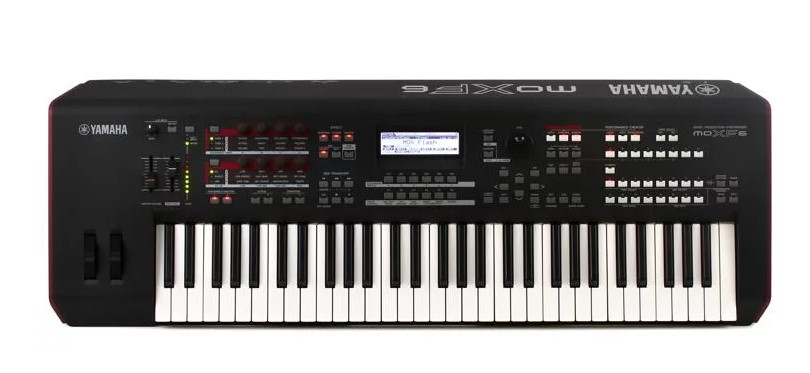
The Yamaha MOXF6 61-key is an amazing workstation for producing hip-hop music with a massive soundset and computer connectivity. With more than 256 Performances to spark your musical inspiration, the expressive semi-weighted 61-key keyboard is perfect for any musician. The Virtual Circuitry Modeling (VCM) effects give you the ability to create amazing sounds, while the 7,981 arpeggiator patterns and 4-part interactive arpeggio engine provide endless possibilities for exploration. The comprehensive sequencer (including step recording) is perfect for capturing your ideas, and the built-in 4-in/2-out USB Audio/MIDI interface makes it easy to connect to your Mac or PC. Bundled with YC-3B Organ Emulator soft synth, Prologue analog synth, and Cubase AI7, the Yamaha MOXF6 61-key is the perfect keyboard for advanced hip-hop producers.
The Yamaha MOXF6 is an upgrade of the MOX6. At first glance there is not much difference other than the slot for the flash expansion card underneath the MOXF6. However, the MOXF6 has an increased waveform ROM of 741MB compared to the 355MB on the MOX. The polyphony is also greater at 128 which is double what was on the MOX. Finally the MOXF6 has more insert effects.
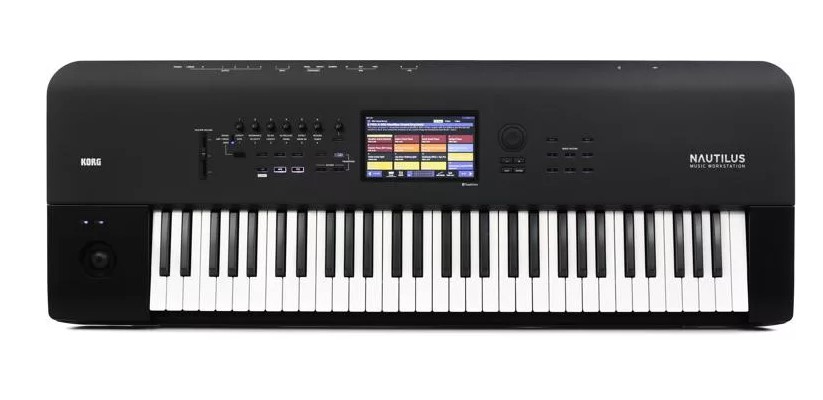
Korg’s Nautilus 61 is a top-of-the-line keyboard workstation that offers an incredible array of sounds and features. With nine onboard sound engines, expansions for PCM and Piano engines, and over 2,200 sounds in all, the Nautilus 61 is capable of creating virtually any type of music. The touch-sensitive TouchView interface and control panel make it easy to navigate the vast amount of sounds and settings, while the six real-time knobs allow you to quickly tweak sounds to your liking. The Nautilus 61 also features Korg’s Dynamic Polyphony Allocation, which ensures that all your notes are voiced, and the convenient arpeggiator and drum track functions make it easy to create complex sequences. With its sleek, lightweight design and roadworthy construction, the Nautilus 61 is a keyboard workstation that is built to last.
The Korg Nautilus 61 is quite similar to the Korg Kronos 61. Despite having the same number of keys, they are both non-weighted. The Kronos though has a bigger 8-inch display compared to the 7-inch on the Nautilus. It also has aftertouch unlike the Nautilus. As such the kronos is quite pricey, making the Nautilus a better option for beginners. We did not consider the few extras enough to pay.

Roland’s JUNO-DS61 is a perfect portable 61-note velocity-sensitive keyboard with a comfortable synth action. It’s loaded with performance-ready sounds, including updated pianos and additional organs. You can access over 1,000 free downloadable EXP sounds from Roland’s Axial website. The Sample import function lets you play your WAV files on the keyboard. And easy sound manipulation and editing is possible with hands-on knobs and sliders. The 8 Phrase Pads enhance your performances with triggered samples and songs. The mic input and dedicated reverb, vocoder, and Auto Pitch effects let you do impressive vocal performances. The 8-track pattern sequencer with non-stop recording lets you quickly develop song ideas.
The Roland Juno-DS61 is quite similar to the Yamaha MX61. They are both 61-key workstations and are portable. The MX61 thought needs an advanced person especially when setting the piano tones. Moreover the JUNO-DS61 has four assignable knobs to change the sound, an option not available on the MX61. Though the Juno-DS61 is a better unit, the MX61 has a better keybed.
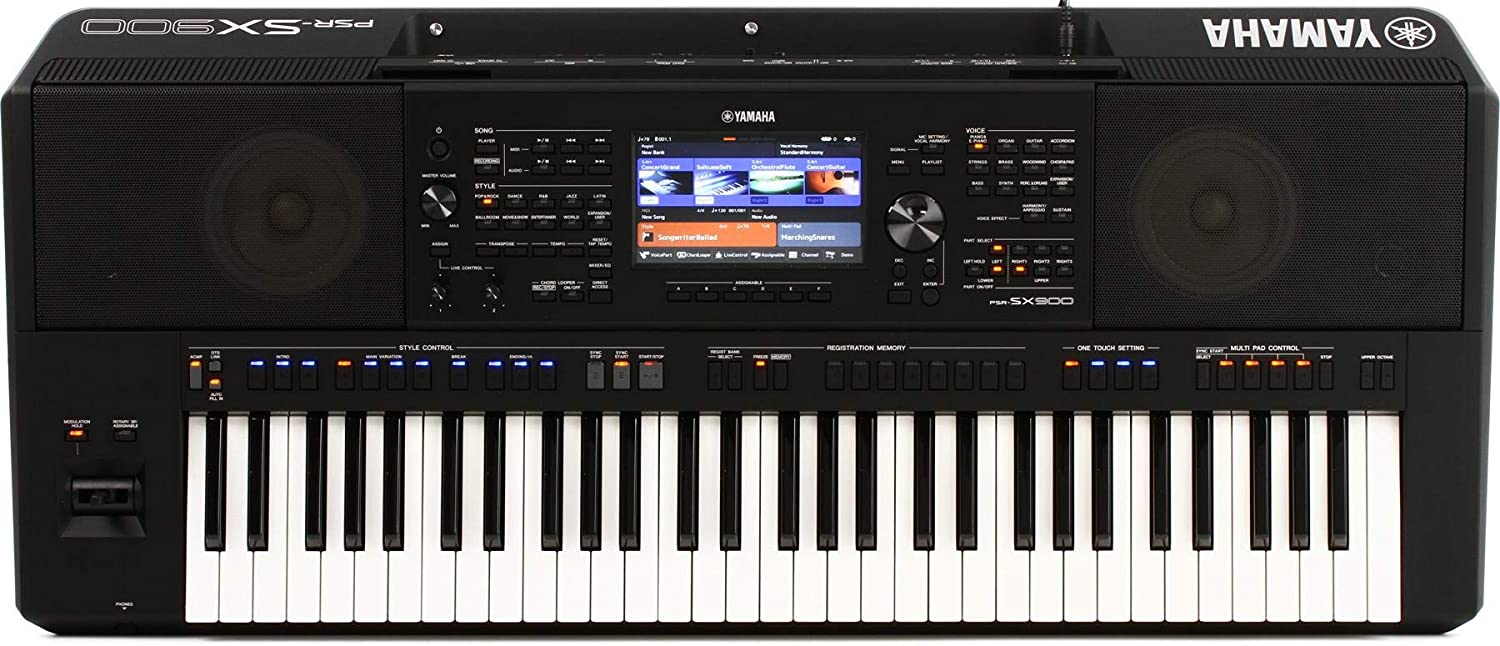
The Yamaha PSRSX900 is one of the best arranger workstations available on the market today. It features a 61-note synth keyboard with 4 selectable velocity curves, Multi Pads Creator (4 pads, 329 banks), AWM (Advanced Wave Memory) Stereo Sampling, and 128-note polyphony. Additionally, it has 1337 Voices + 56 Drum/SFX Kits + 480 XG Voices, 525 Styles, including 463 Pro, 46 Session, 6 Free Play, and 10 DJ. Finally, it has a 7″ TFT Wide VGA LCD color touchscreen that gives you immediate access to Voice and Style assignments, features, and settings. If you’re looking for a top-of-the-line keyboard workstation, the Yamaha PSRSX900 is a great option to consider.
The Yamaha PSR SX900 is the Yamaha PSR SX700’s bigger sister. It has a 4GB internal memory while the SX700 has 1GB internal memory. It also has a Chord Looper which is not available on the eSX700. As for the USB ports, the SX900 has 2 while the SX700 only has one. Finally, the SX900 has 351 more voices making it the far superior workstation and worth paying extra for.

The Casio WK-6600 is a great value for money keyboard workstation. It has 76 piano-style keys and a pitch bend wheel, making it perfect for live performances or studio recordings. The WK-6600 also comes with 700 sounds, 210 rhythms, and 100 DSP effects, making it one of the most versatile keyboard workstations on the market. Additionally, the WK-6600 features a 16-track sequencer, arpeggiator, and 32-channel mixer, making it perfect for both live and studio use. Finally, the WK-6600 includes an Audio in Terminal, allowing you to jam along with your favorite tunes.
The Casio WK-6600 is a slightly improved Casio WK6500. You cannot go wrong with either, but the WK-6000 is the better pick. While the WK-6500 has 670 built-in tones, the WK 6600 has 700 tones. The latter also has 10 more preset rhythms and accompaniments at 210. They are both quite affordable workstations, but we are inclined to recommend the WK6600 for the few extras.
If you’re a musician who wants to create electronic music, then you’ll need a keyboard workstation. These keyboards are designed for making music with sounds that are produced electronically. There are many things to consider when purchasing a keyboard workstation, such as the type of music you want to produce, the number of keys you need, the features you need, the size and weight of the keyboard, and your budget.
One of the first things to consider is the type of music you want to produce. Do you want to create dance music, hip-hop, pop, or something else? Different keyboard workstations are better suited for different genres of music. If you’re not sure what type of music you want to make, then it’s a good idea to purchase a keyboard that is versatile and can be used for many different types of music. Check out our comprehensive guide for best keyboards for making beats.
Weighted or unweighted keys is one of the first things you should consider when purchasing a keyboard workstation. Weighted keys are designed to mimic the feel of a real piano. They’re heavier than unweighted keys, and they resist your fingers as you play. This can make it easier to develop proper technique, and it can also help you play with more expression. Unweighted keys are lighter, and they don’t have the same resistance. This can make them easier to play, but some people find that they don’t respond as well to dynamics.
The next thing to consider is the number of keys you need. Keyboards come in several different sizes, from 25 keys up to 88 keys. If you’re just starting out, then you may not need a keyboard with a lot of keys. However, if you’re an experienced musician, then you’ll probably want a keyboard with more keys so you can have more range.
Polyphony refers to the number of notes that a keyboard workstation can produce at one time. Most keyboards have at least 32 polyphony – meaning they can produce 32 notes simultaneously. Some have 64 or even 128 polyphony. If you plan on using a lot of complex sounds and layering them together, you’ll want a keyboard with high polyphony. Otherwise, 32 should be plenty.
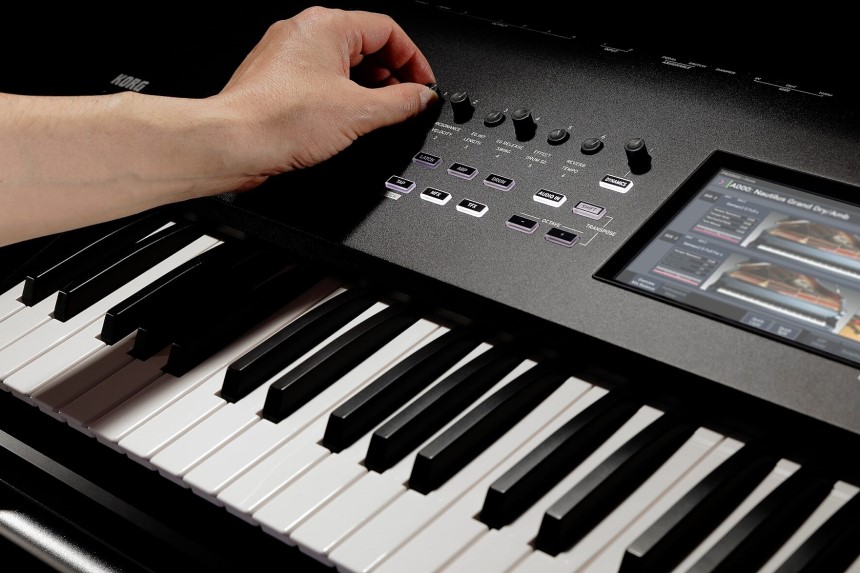
Keyboard workstations usually come with a variety of built-in sounds and effects. The number of sounds varies from model to model, but most workstations have hundreds – if not thousands – of different sounds. These include everything from pianos and guitars to drums and synthesizers. You can also usually find a variety of effects, such as reverb, delay, and chorus.
Some keyboard workstations also come with software that allows you to create your own sounds or edit the existing ones. This can be a helpful feature if you’re looking for something specific, or if you want to experiment with sound design. Not all keyboard workstations have this feature, but it’s something to keep in mind if you’re interested in it.
Another thing to consider is the features you need. Keyboards come with a variety of different features, such as built-in speakers, different types of sounds, and different ways to connect to other devices. If you’re not sure what features you need, then it’s a good idea to read reviews of keyboard workstations to see what other people are saying.
MIDI and CV/Gate connectivity is an important feature of keyboard workstations. This allows the user to connect their keyboard to other MIDI devices, such as sound modules, sequencers, and computers. CV/Gate connectivity allows the user to control other analog synthesizers with their keyboard. This is a great feature for those who want to create complex polyphonic sounds.
The next thing to consider is the size and weight of the keyboard. Some keyboards are very large and heavy, while others are small and portable. If you’re going to be traveling with your keyboard, then you’ll want to make sure it’s not too heavy or bulky.
Most keyboard workstations have some form of pedal input, which allows the player to control various functions of the instrument. Pedal inputs can be used to sustain notes, control the volume, or alter the timbre of the sound. Some keyboard workstations also have a pitch bend wheel, which allows the player to change the pitch of notes while they are being played.
Touch sensitivity refers to how the keys respond to your playing. Some keyboards have dynamic touch, which means that the harder you play, the louder the sound will be. This can be helpful for adding expression to your playing. Other keyboards have velocity-sensitive keys, which means that they register different levels of velocity (or speed) when you hit them. This can also be helpful for making your playing sound more expressive.
Some keyboard workstations come with built-in memory, which allows you to store sounds, effects, and other data on the workstation itself. This can be helpful if you want to keep your settings separate from other devices – such as computers or MIDI controllers. Some keyboard workstations also have the ability to expand their memory via SD cards or other means.
If you plan on using a lot of different sounds or storing a lot of data, you’ll want a keyboard workstation with plenty of memory. Otherwise, you might not need as much.
There are many brands of keyboard workstations on the market today. Some of the more popular brands include Yamaha, Korg, and Roland. Each brand has its own unique features and benefits that make it stand out from the rest. When choosing a keyboard workstation, it is important to consider what you need and want from the device. Doing your research ahead of time will help you make the best decision for your specific needs.
Yamaha is a Japanese company that has been manufacturing musical instruments for over 100 years. The company offers a wide range of keyboard workstations, each with its own unique features. Yamaha keyboards are known for their durability and quality sound. Many professional musicians prefer Yamaha keyboard workstations for their stage performances. Check out our comprehensive guide for best Yamaha digital pianos to know more about this brand.
Korg is another popular brand of keyboard workstation. Korg keyboards are known for their innovative design and excellent sound quality. The company offers a variety of models to suit different budgets and needs.
Roland is a French company that has been making musical instruments for over 50 years. Roland keyboard workstations are known for their versatility and high-quality sound. The company offers a wide range of models, each with its own unique features. Roland keyboard workstations are a good choice for both beginners and professionals. Check out our comprehensive guide for best Roland keyboards.
The last thing to consider is your budget. Keyboards can range in price from a few hundred dollars up to several thousand dollars. If you’re just starting out, then you may want to purchase a cheaper keyboard. However, if you’re an experienced musician, then you’ll probably want to invest in a more expensive keyboard that has more features and better quality.
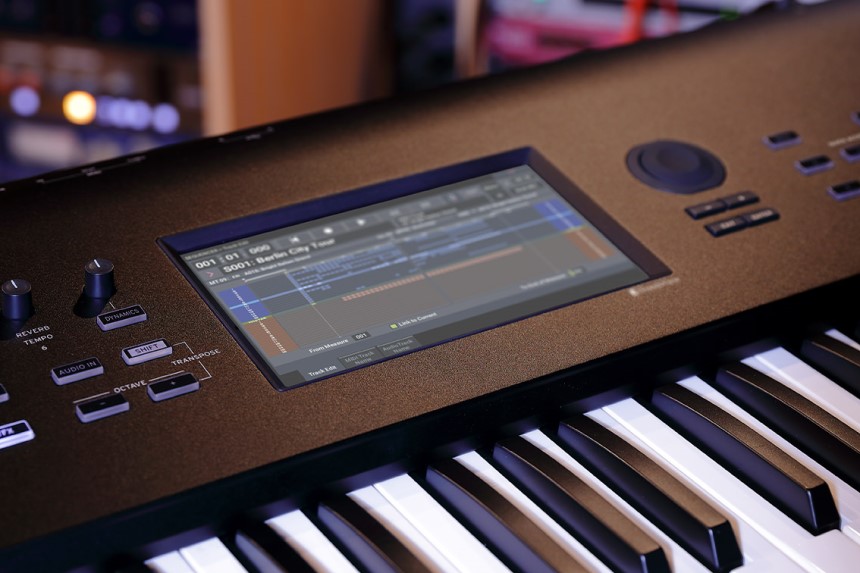
Keyboard workstations typically have a built-in computer music sequencer, which allows users to record and edit their performance. They also usually have a larger number of keys than other electronic musical instruments, making them better suited for playing complex melodies and chords. In addition, keyboard workstations often come with a range of software programs that allow users to create and manipulate sounds, as well as to control other devices such as MIDI controllers and sound modules.
There are many benefits to using a keyboard workstation. First, they can help you keep your hands in the proper position while working. This can help prevent carpal tunnel syndrome and other repetitive motion injuries.
Second, keyboard workstations can help you stay more organized. By having all of your tools and materials within reach, you can avoid wasting time searching for things.
Third, keyboard workstations can improve your posture. By sitting up straighter, you can reduce back pain and fatigue.
Fourth, keyboard workstations can increase your productivity. When you have everything you need at your fingertips, you can work more quickly and efficiently.
Finally, keyboard workstations can make your workspace more comfortable. By customizing your workspace to fit your needs, you can reduce stress and increase your enjoyment of your work.
The Roland FANTOM-8 is a stunning keyboard workstation for modern musicians. It has a fast and fluid workflow, a great sound set, and plenty of expansion options. It’s also aftertouch-sensitive and has a progressive hammer-action keybed with escapement for a realistic playing experience. If you’re looking for a keyboard workstation that will help you take your music to the next level, the Roland FANTOM-8 is a perfect choice.
The Korg Kross 2-61-MB 61 is a great keyboard workstation that is perfect for any musician. It is lightweight and portable, making it easy to take with you on the go. The built-in speakers are a nice touch, and the touchscreen display is helpful for editing sounds and adjusting settings. If you are looking for a keyboard workstation that can do it all, the Korg Kross 2-61-MB 61 is a perfect choice.
The Kurzweil K2700 88 is a great keyboard for both professional and amateur musicians alike. It is a versatile keyboard that can be used for a variety of musical styles. The keyboard has 88 keys, which is the standard size for a piano. The keyboard also has a number of other features that make it ideal for use in a studio or live setting, such as pitch and mod wheels and MIDI connectivity. The keyboard is also relatively affordable, making it a good option for budget-conscious musicians.